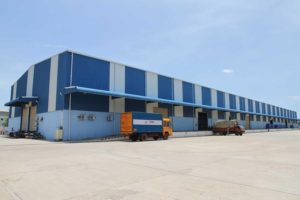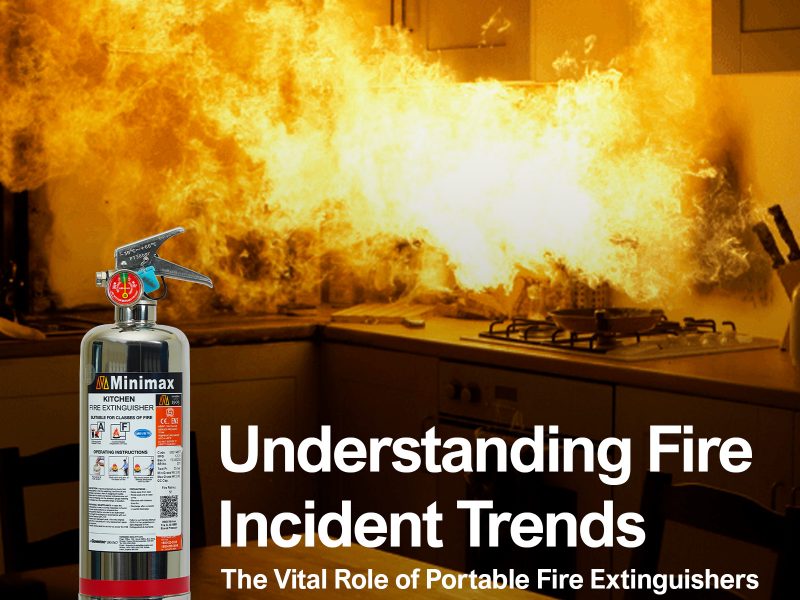
Warehouses are vital repositories for any organization to stock raw materials or finished goods. Warehouses are critical as they have such an important function of storing most of the goods which are ready for sale or distribution. Any warehouse disaster, such as a fire, can have disastrous consequences, aside from the obvious issue of extensive product damage there may be employee injury, forced relocation, or potentially shut down which may force business to cease operations.
Fire Safety Risk Assessment and Plan
The starting point for any workplace fire safety plan is undertaking a risk assessment according to the relevant fire safety regulations. Most risk assessments follow these five steps:
- Identify the fire hazards.
- Determine the people at risk.
- Evaluate, remove or reduce the risks.
- Record your findings, prepare an emergency plan and provide training.
- Review and update the fire risk assessment regularly.
It is vital that the person in charge of fire safety carries out a risk assessment and makes regular checks to ensure this information is up to date. All the employees shall be provided comprehensive fire safety training and informed about the emergency procedures. Fire safety starts with education and training, but common sense is crucial. If something looks dangerous, make sure the responsible person is aware so that the problem can be investigated and made safe.
Effective incident management is imperative in identifying fire hazards and predicting potential losses in warehouses and makes the working environment safer for employees and visitors.
In addition, organizations should implement well-functioning evacuation procedures. Procedures should be fully documented, shared publicly, and practiced frequently. Monitor periodically if all exits are clear for people to evacuate safely in an emergency. Make it easy for employees to report anything that they spot as a potential risk.
Fire Safety Procedures
Using the information gathered from the risk assessment, establish fire safety procedures that are customized for the fire risks identified. Train all employees in these procedures to ensure a unified response in the event of a fire.
There are several effective fire safety measures to help mitigate warehouse fires, such as:
- Installing fire suppression systems, such as sprinklers, and fire doors.
- Installing and regularly inspecting fire detection systems, such as smoke alarms.
- Placement of fire extinguishers (Carbon dioxide, Clean Agent, Mechanical Foam, Powder type).
- Install internal and external security cameras and alarms for risk monitoring.
- Training employees to identify fire hazards and practice fire safety.
Fire Protection Tools
Assemble all the tools at your disposal to help fight warehouse fires. These include fire extinguishers, sprinklers, and automatic fire detection systems. The number and type of fire extinguishers depending on the nature of fire risks and a class of fire. Employees shall have access to an extinguisher within 50 feet of travel distance.

Correct Stacking Arrangements
Smart storage can greatly lower your fire risk. Arrange the goods in a clearly defined pattern, keep electrical switchgear and heating equipment clear of storage, there shall be enough clearance between sprinkler heads and stored goods for the effective performance of sprinkler system in case of a fire emergency, and segregate the hazardous and non-hazardous materials. Place combustible materials away from anything that is an ignition risk, and ensure they are stored safely and according to government guidelines.
Electrical Systems
All the electrical wiring, equipment, and systems shall be inspected and maintained periodically. Faulty electrical wiring and connections shall be replaced promptly.
Smoking
To comply with smoke-free regulations, prohibit smoking throughout the premises.
Waste Removal
Make sure that the facility is regularly cleaned and free of dust. Packing material or combustible waste accumulation can be a major fire risk in the warehouse. All waste materials shall be removed at the end of every day and shall be thrown in the waste material bins located outside the warehouse building
Proactive prevention and developing response procedures can save a lot of money, regret, and possibly lives. While the safety measures are voluntary, implementing and adhering to the lifesaving, and ultimately cost-saving measures is the ethical responsibility of the warehouse managing organizations.


